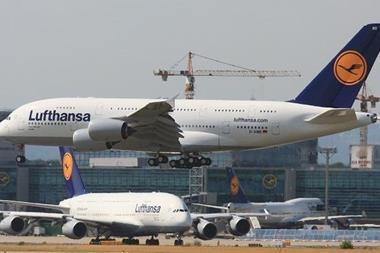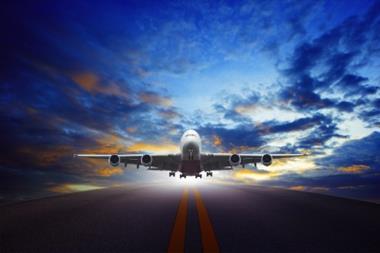Aviation experts at Allied World, Lockton and Aspen explain how the latest disaster will affect the market

The crash of Germanwings Flight 9525 last month killed 150 people, making headlines globally. The disaster is expected to cost insurers $300m (€264.78m) and StrategicRISK’s sister title GR has interviewed three aviation insurance experts to determine how the crash might affect the market.
What effect will the Germanwings crash have on the aviation insurance market in 2015?
Allied World senior vice-president Olivier Marre: The original reserve for the Germanwings crash has been set earlier than would normally be expected. However of course, this was an unprecedented situation and it is very difficult to ascertain what the final magnitude of the loss will be. In this instance, the panel of insurers involved in the catastrophe is much larger than usual (and much larger indeed than for the Malaysian losses). This means that most of the major aviation insurers will be affected by the claim and there may be more pressure to increase prices now than in the fourth quarter of 2014. In absence of another major event before the fourth quarter, it is widely believed that the market will not turn this year.
Lockton senior vice-president Tim Liddiard: These events will no doubt be discussed and analysed by insurers and will produce a new round of questions and answers. Do not expect this debate to be a mere moment in time. It brings in to question not only ergonomics but critically something that in many ways is taken for granted: the health of the crew. The psychological screening and recruitment criteria of crew has taken a leap up the agenda.
It may be argued that the tragic losses in the past 12 months are a significant indicator that the risk profile for airlines and manufacturers is changing, therefore leading insurers to refocus on their exposures and risk profile.
This tragic loss in itself will not unseat the marketplace to turn it in a different direction. It will, however, raise new challenges for insurance buyers as insurers focus on the risks that have brought tragedies not only to Germanwings but also to the other airlines that have been widely publicised in the last twelve months.
Aspen Insurance international energy & aviation division chairman David Whiter: The claim costs resulting from the incident are likely to exceed 25% of the total annual airline premium income worldwide. This makes it almost inevitable that 2015 will be the third year running where the industry experiences a negative premium claims balance. However, with the prevailing over-capacity, it is very doubtful that increases are obtainable and a number of risks renewing since the accident have seen further reductions in rate.
The aviation insurance market is currently commoditised with broker facilities. Is this adding value to clients?
Marre: Broker facilities are beneficial to clients in that they reduce the composite price they pay, mostly by creating pressure on the following markets. However, this tells only part of the story. Facilities are mainly valuable for the clients with difficult risks to place. One could argue that they have less value when the risk is attractive to the market as similar results in terms of pricing can be achieved by applying market forces. So the indirect impact of facilities is to reduce the difference between risks of different complexity.
One downside for the client may be that facilities make life harder for smaller following markets and could eventually reduce the number of players or accelerate concentrations, which will inevitably reduce long-term capacity and choice in the insurance offering going forward.
Liddiard: Clients are currently achieving added and quantifiable value through cost reductions. It’s easy to talk as though the insurance market is now a more tradeable commodity like other products, as against a service, but is that really the case? It can certainly be argued that broker facilities that are associated with commoditisation are merely mechanisms that have developed as a result of the high volume of capacity that currently prevails in the aviation market today. Clients are the litmus test and it would be interesting to see if they believe that the product is really being sold that differently.
What trends have you noticed in aviation insurance buying in the past 12 months?
Marre: Clients continue to take full advantage of market conditions. The larger number of long-term transactions illustrates the fact that the market is very competitive. However, they are also looking for innovation in their insurance offering. For example, we recently worked with Airbus to offer complimentary aircraft hull insurance to airlines that purchase Airbus’ runway overrun prevention system. This prevents runway overruns, which is believed to be one of the most frequent causes of aircraft accidents today. This type of initiative is what clients are looking for, where innovative technology and services meet for the benefit of operators and for aviation safety.
Liddiard: It is clear that many clients have developed a greater understanding on how to access insurance markets. The developing trend is now a marketing endeavour on two fronts: domestic capacity and international capacity. Business is tendered more now than ever. Buying groups remain prevalent by achieving significant benefits of scale. This trend will continue particularly owing to high levels of capacity. Trends in aviation buying are a result of many factors but the current most obvious influence remains global capacity.
Whiter: The main trend has been a reduction in rates from already depressed levels. There has been some relaxation in cover, but slips conditions have generally held up well. Client consolidation has also happened as large carriers, particularly those from the Middle East, build up stakes in airlines in other parts of the world.
How is the aviation insurance industry adapting to new emerging risks such as cyber attacks?
Marre: I believe the aviation insurance industry is not adapting rapidly to emerging risks such as cyber, but the threat is undoubtedly real. A cyber attack could generate simultaneous accidents of multiple aircrafts and therefore a significant challenge to our industry because coverage, reinsurance structure and pricing foundations are based on the non-correlation of aviation occurrences. So, although people are talking about the subject, there is not much action so far, and it is a difficult and complex area to resolve.
Liddiard: Cyber is one of those occasions when the insurance industry has to respond to a globally unprecedented era of change and wholly changed risk landscape. With the ubiquity of everyone relying so heavily on digital tools it is easy to regard the ensuing cyber risks as a one size fits all. This could be no further from the truth though, with every industry sector needing to look specifically at the risks that affect it and where its real priorities lay. Aviation is by its nature a complex industry, both from a logistics and people perspective. Understanding these complexities in terms of the cause and effects of data breaches dictates that sophisticated risk modelling is required.




















No comments yet